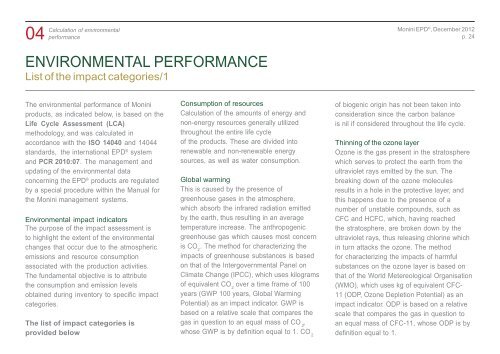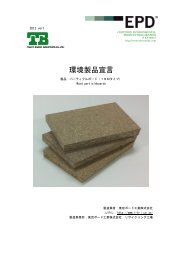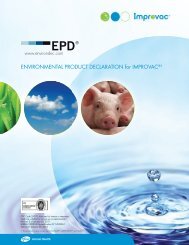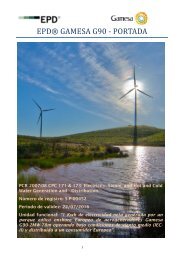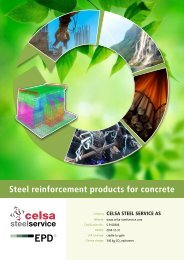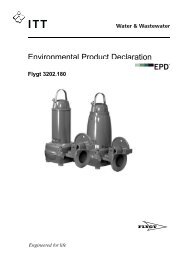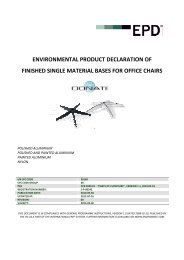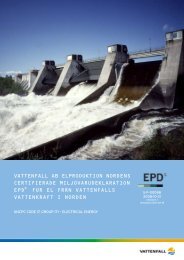(EPD®) for "GranFruttato" - Monini
(EPD®) for "GranFruttato" - Monini
(EPD®) for "GranFruttato" - Monini
- No tags were found...
You also want an ePaper? Increase the reach of your titles
YUMPU automatically turns print PDFs into web optimized ePapers that Google loves.
04Calculation of environmentalper<strong>for</strong>manceENVIRONMENTAL PERFORMANCEList of the impact categories/1<strong>Monini</strong> EPD ® , December 2012p. 24The environmental per<strong>for</strong>mance of <strong>Monini</strong>products, as indicated below, is based on theLife Cycle Assessment (LCA)methodology, and was calculated inaccordance with the ISO 14040 and 14044standards, the international EPD ® systemand PCR 2010:07. The management andupdating of the environmental dataconcerning the EPD ® products are regulatedby a special procedure within the Manual <strong>for</strong>the <strong>Monini</strong> management systems.Environmental impact indicatorsThe purpose of the impact assessment isto highlight the extent of the environmentalchanges that occur due to the atmosphericemissions and resource consumptionassociated with the production activities.The fundamental objective is to attributethe consumption and emission levelsobtained during inventory to specific impactcategories.The list of impact categories isprovided belowConsumption of resourcesCalculation of the amounts of energy andnon-energy resources generally utilizedthroughout the entire life cycleof the products. These are divided intorenewable and non-renewable energysources, as well as water consumption.Global warmingThis is caused by the presence ofgreenhouse gases in the atmosphere,which absorb the infrared radiation emittedby the earth, thus resulting in an averagetemperature increase. The anthropogenicgreenhouse gas which causes most concernis CO . The method <strong>for</strong> characterizing the2impacts of greenhouse substances is basedon that of the Intergovernmental Panel onClimate Change (IPCC), which uses kilogramsof equivalent CO over a time frame of 1002years (GWP 100 years, Global WarmingPotential) as an impact indicator. GWP isbased on a relative scale that compares thegas in question to an equal mass of CO ,2whose GWP is by definition equal to 1. CO2of biogenic origin has not been taken intoconsideration since the carbon balanceis nil if considered throughout the life cycle.Thinning of the ozone layerOzone is the gas present in the stratospherewhich serves to protect the earth from theultraviolet rays emitted by the sun. Thebreaking down of the ozone moleculesresults in a hole in the protective layer, andthis happens due to the presence of anumber of unstable compounds, such asCFC and HCFC, which, having reachedthe stratosphere, are broken down by theultraviolet rays, thus releasing chlorine whichin turn attacks the ozone. The method<strong>for</strong> characterizing the impacts of harmfulsubstances on the ozone layer is based onthat of the World Metereological Organisation(WMO), which uses kg of equivalent CFC-11 (ODP, Ozone Depletion Potential) as animpact indicator. ODP is based on a relativescale that compares the gas in question toan equal mass of CFC-11, whose ODP is bydefinition equal to 1.


